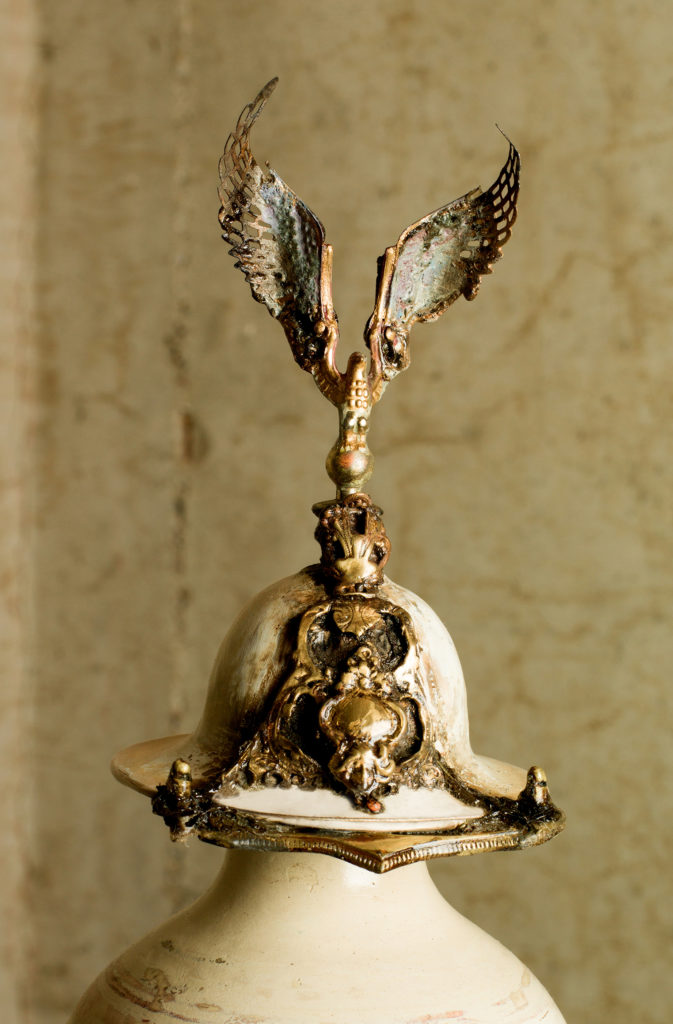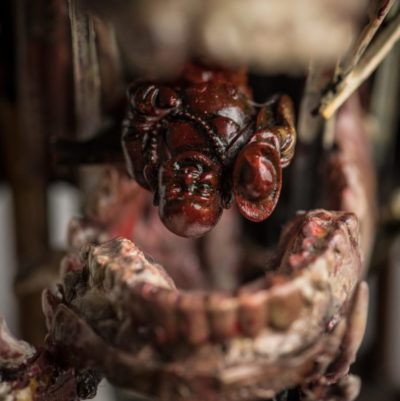


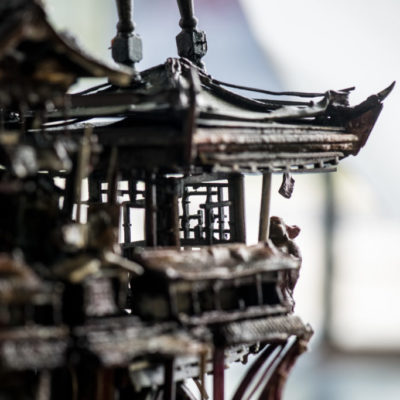

Reveille. 2021
34”x 13”x 14..5”
Porcelain, Orange Jade, Brass, Wood, Gold, Diamonds, Taxidermy Rough Collie Skull and Pheasant Talon’s, Resin
To break isolation, especially since the start of Covid and to maintain a social awareness, my iPhone has become the window that connects me with life, a way to see humanity.
The term I’ve learned is “Asian face blindness.” A stereotype that all Asians look alike which was an idea sown into the American psyche during World War II.
I’ve been troubled about stories of discrimination and hate towards Asian demographics, and perpetuated through bigotry and blame casting notions of “Asian face blindness”. This most recent piece is my response to this ethos in the world. A fierce and reverent guardian totem to protect against that hate.
In the Sichuan Province of China, traditionally found in the ancient kingdom of Chu, there is a story about an ancient Chinese tomb guardian.
A Sichuan monster, with bulging eyes, and exaggerated facial features that was placed in or outside of tombs to ward off evil spirits.
Similar to a Tomb guardian, this work, titled “Reveille”, is a bursting bloom of protection. A frightening symbol of hope to guard and protect the myriad faces of Asian culture.
How I made Reveille:
In Greek Mythology, Mêtis, the personification of prudence or “the Wise Counsellor” in the Homeric poems was the first love and wife of Zeus. After prophesied to him that she would give birth first to a girl and then to a boy, Zeus devoured her when she was pregnant with Athena. Afterwards, and from his head, he himself was who gave birth to Athena.
We might call “Metis”, as practical knowledge, cunning, or having a knack for something.
Odysseus being a model for somebody having Metis because of his ability to improvise his way through unexpected situations.
In this idea, this piece, “Reveille”, was created by way of a “bursting bloom”, from which the breadth of 25 some years of working experience was drawn upon. Process, material, technique harmonized by individuation. And consequently, a voice of protection can now be heard, but also seen.
“Though I was trained as a potter and have roots in the paradigm of craft, to me, art is about a concept, not necessarily a material.”
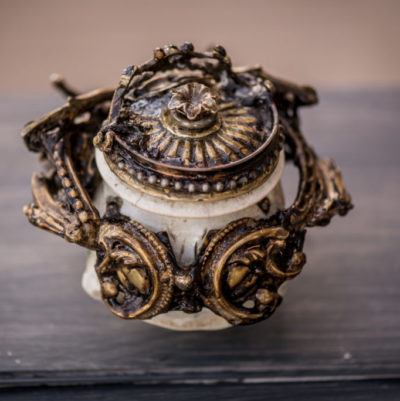

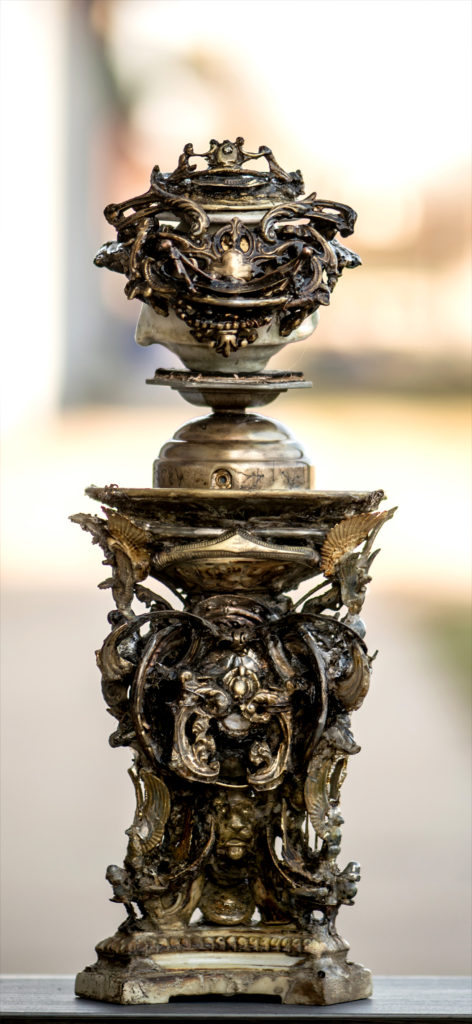

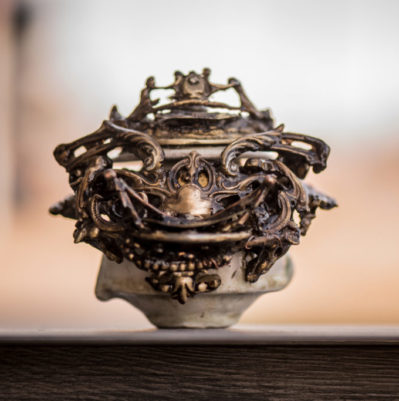
Monstrance. 2020
16”x 5”x 5”
Porcelain, Brass, Diamonds, Resin
Throughout the ages, man has held sacred the resting place of his departed loved ones. This vessel is a customized Burial Urn to offer a sacred space for the essence of one who has died and honors their unique life and the organic vessel of their soul. When the ashes are sealed inside my urns, the urn continues to represent them.
As a maker, my urns must be worthy of what they contain. In this recent piece, the decorative form and variety of materials – porcelain, brass, diamonds, resin – are secondary to its utilitarian function: a tabernacle of essence
How I made Monstrance.
Wheel throwing, hand-building, and holding a piece in suspension while anatomizing, or breaking it apart to then methodically, recreate a new derivation from this dissection.
Leaving and removing percentages of certain layers can be a tedious process that reminds me of sgraffito technique for carving into multiple layers, revealing underlying layers and colors.
The vessel’s initial firing, turning clay into stone, allows me a strong surface to work upon, and into, to develop the delicate process of “Gestalt” by means of the application of varying heat sources. These include forced, wispy flame, micro pen torch, heat gun, and soldering iron. Heat, gravity, and pressure are then utilized without interfering with the underlying structure and the many dissimilar elements as they unify and become one.
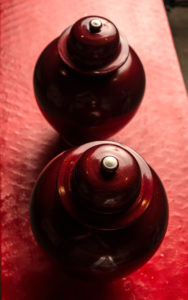
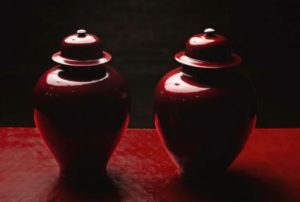

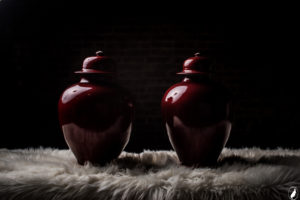
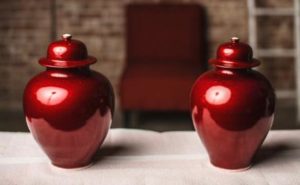
Ruby Jars. 2019
13”x 9.5x” 9.5”
Porcelain
These porcelain vessels are chiral pairs, near but not quite mirrored objects whose simple elegance belie their exquisite craft. Ideas surrounding memory, reliquary, ritual, and repetition accentuate the work’s lightness of touch.
They are intended to have a duality that resides within pleasure. Foremost the pleasure I feel in creating my dreams, then the effect and subsequent pleasure a viewer may experience from encountering the work.
Many times, the process that begins in craft tradition transforms through inductive reasoning and is translated into final works that are not a defiance of the art/craft foundations taught to me, but rather a synchronicity of research, imagination, and material that develop systems of creation that I enjoy as a 21st-century artist.
How I made the Ruby Jars.
There is a technique in pottery called wet stacking. This method of building allows great precision, control, finesse, and any allotment of working time needed for making ceramic art. With this skill, a person relatively of any size and strength, can create relatively, a vessel of any size and shape on a wheel.
As a young artist, the motus operandum was always clay must be at a similar stage of hydration to combine & homogenize two separate pieces of clay. In a very general sense, this is true.
When looking more specifically at the makeup of any clay though, one can recognize ways to bypass this process sequence.. Extend the time needed for creation indefinitely, them also, expand a piece’s physical dimension to as large as desired.
When I am building with clay now, I can truly make anything I want to, but also prolong the time for building an unfired piece to whatever amount my body is capable of. Though these jars are conservative in size, I was still able to easily access the mimetic qualities of green ceramic, and do this in as much time as I needed. Below is how.
With respect to physical water, the correct terms are absorption and adsorption. Adsorption only involves the surface of a material; while absorption involves the entire volume of a material.
When exposed to extreme heat, the clay’s “physical water” will evaporate and separate itself (de-bond) from the molecules to which it was attached. During this process, the clay is also undergoing phase transformations wherein the molecules and atoms repositioned themselves relative to one another. As a result, the bond that was once available to the `water molecule, may no longer be available. Thus, when the clay is cooled and crushed to try and reabsorb water into the structure, the correct bonding is not present due to a phase change.
This isn’t to say that you can’t make the clay wet/ but you will only be taking advantage of the material’s adsorption capability where water will adhere to the surface of PARTICLES (which differ from the molecules and atoms that define how bonding occurs with water and other molecules), and not be absorbed into the molecular structure of clay.
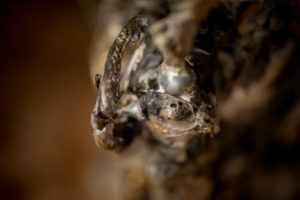
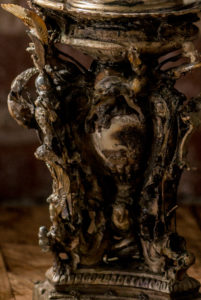

Nackles. 2020
14.5x 5”x 5
Porcelain, Brass, Diamonds, Resin

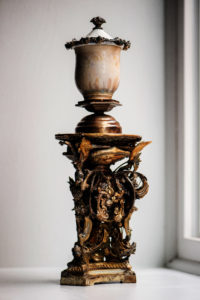
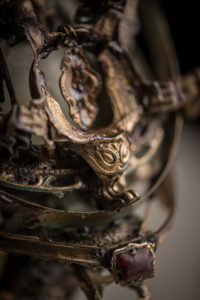
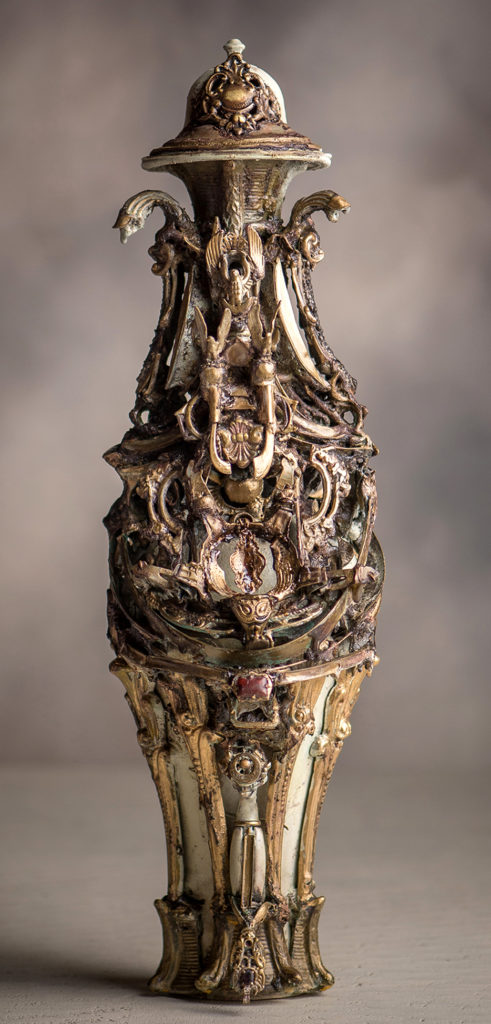
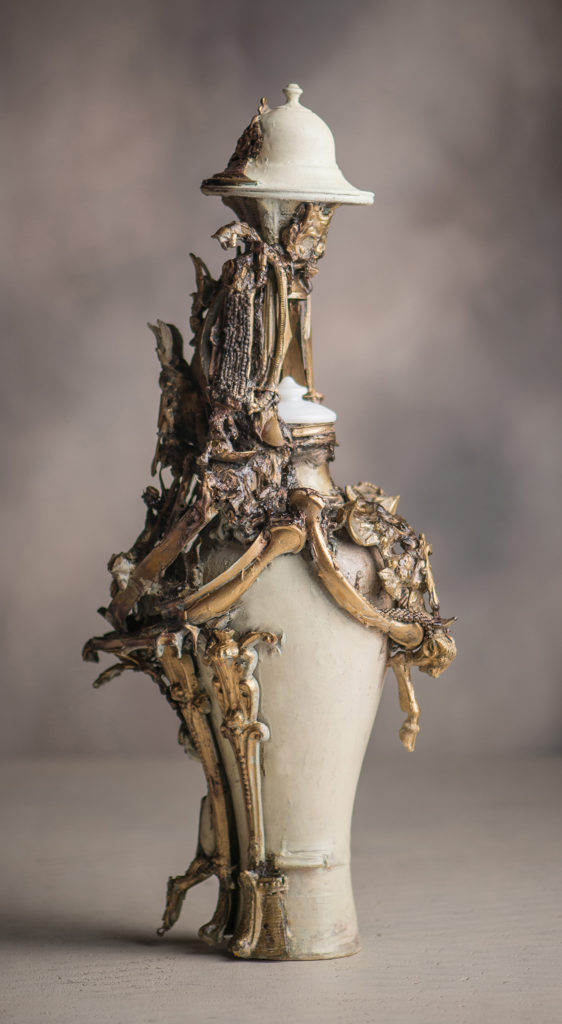
Tabernacle. 2019
49.53”x 17.78”x 21.59”
Porcelain, Glass, Brass, Resin



Guanyin. 2019
22.5”x 6”x 6”
Porcelain, Brass, Green Ruby, Resin
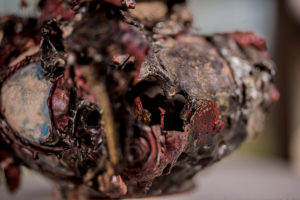
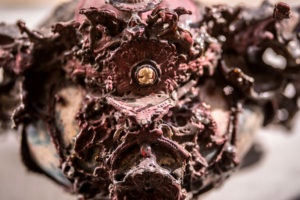

Phoenixing. 2018
7”x 11.75”x 9”
Porcelain, Glass, Brass, Resin
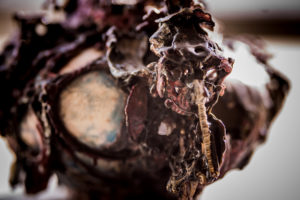
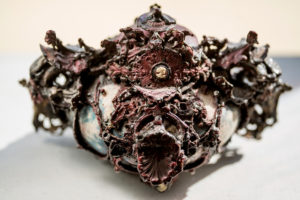

Reliquary. 2018.
19.75”x 7.5”x 7,5”
Porcelain, Brass, Resin
